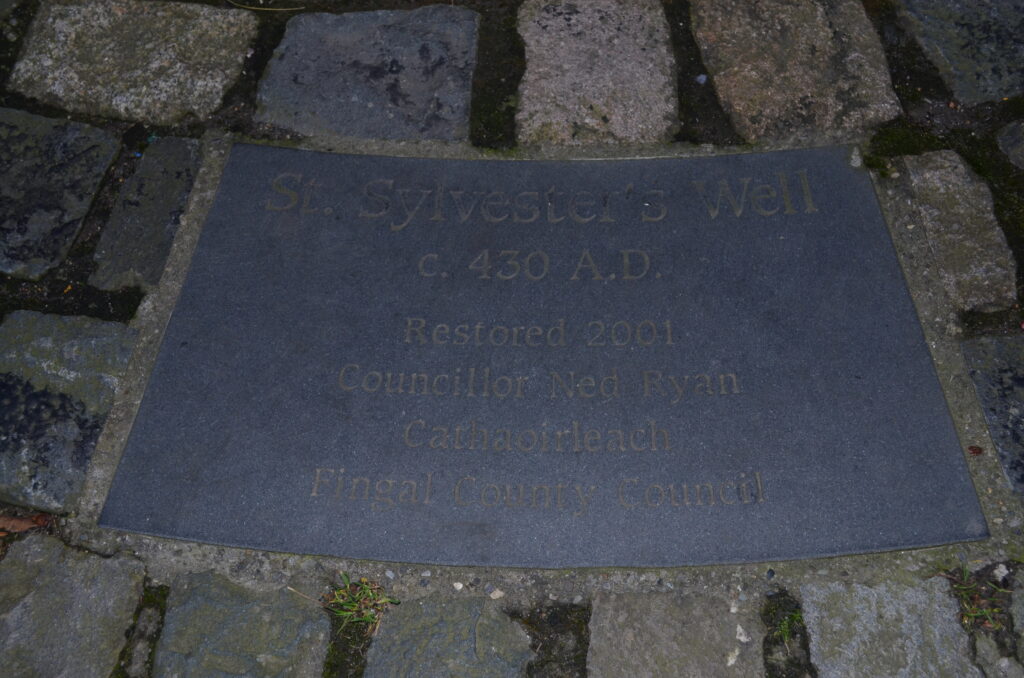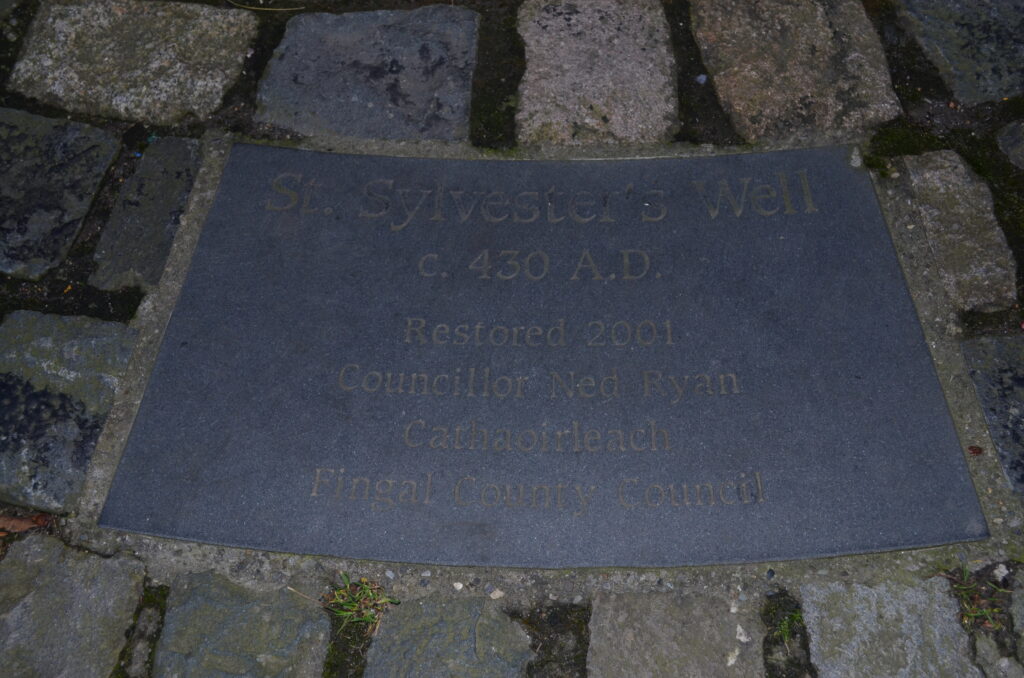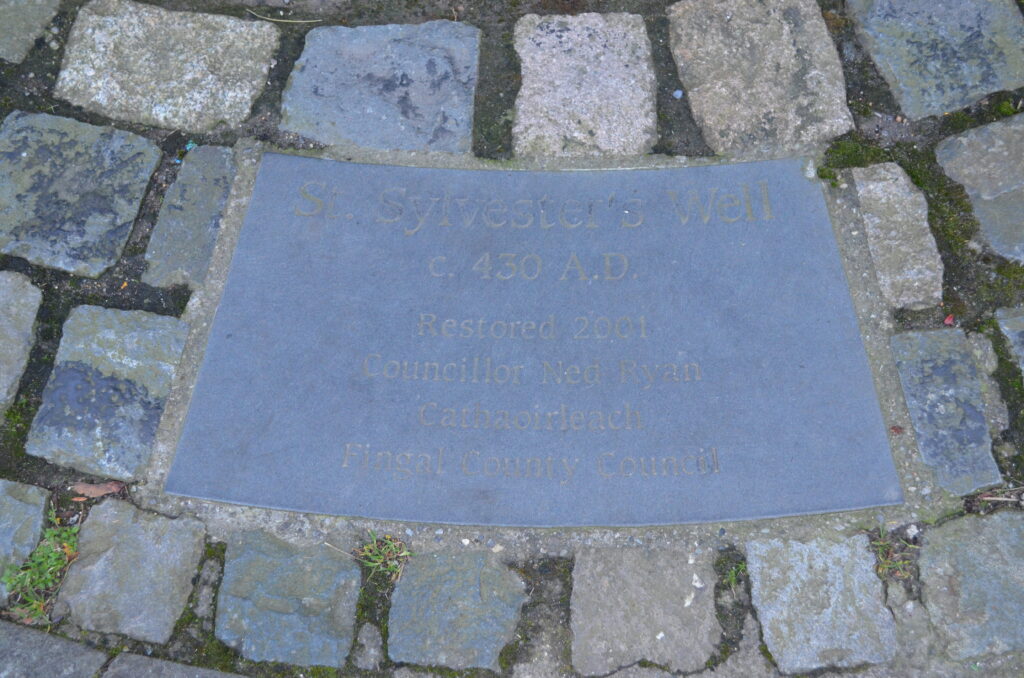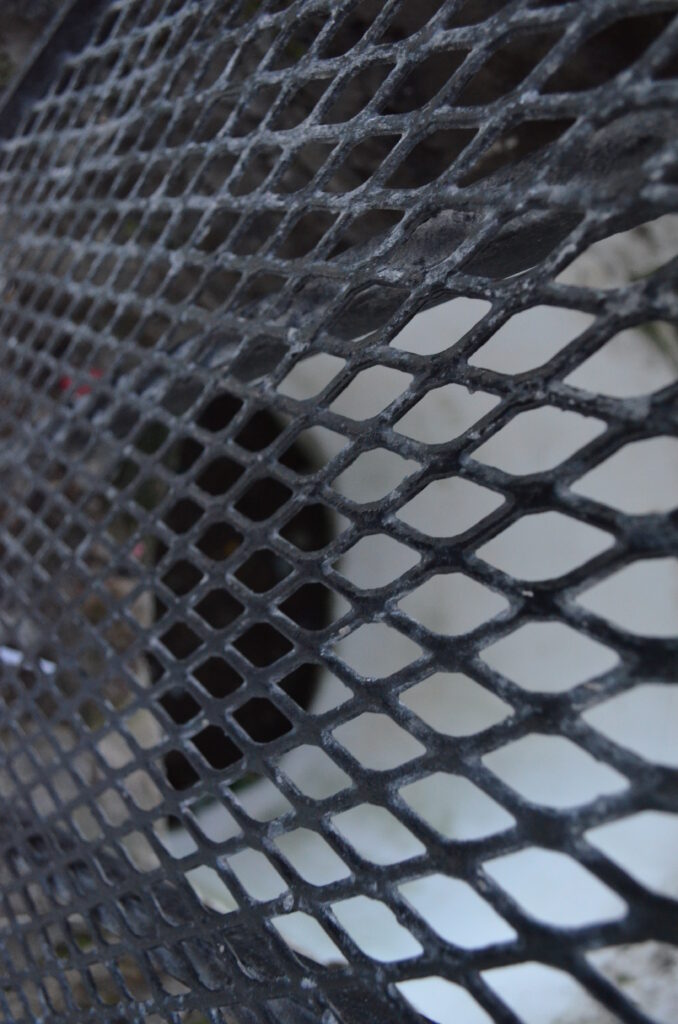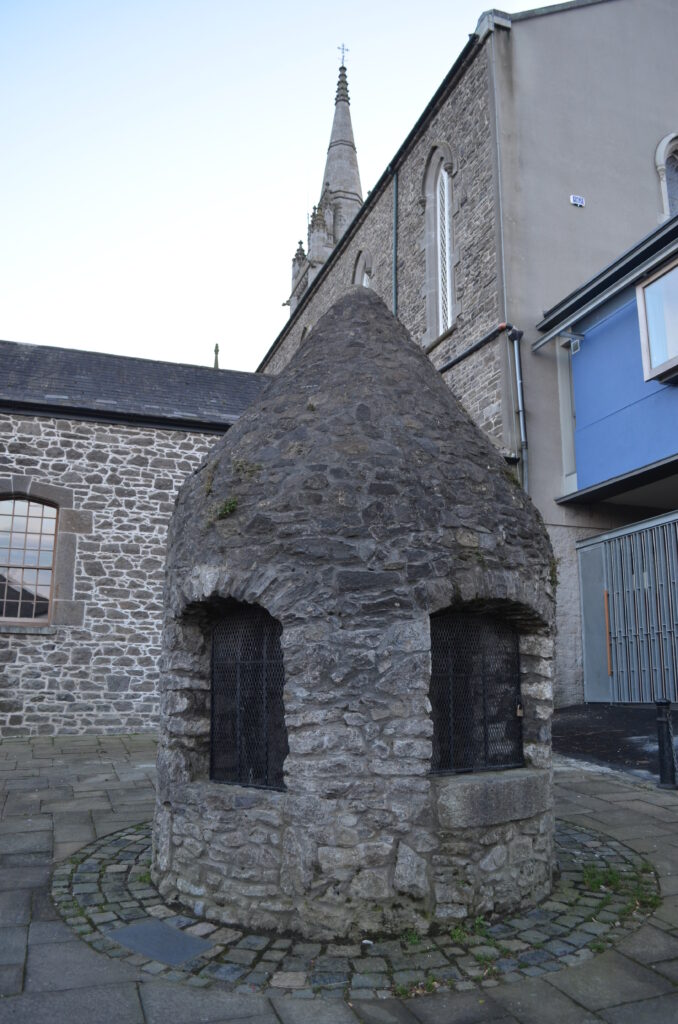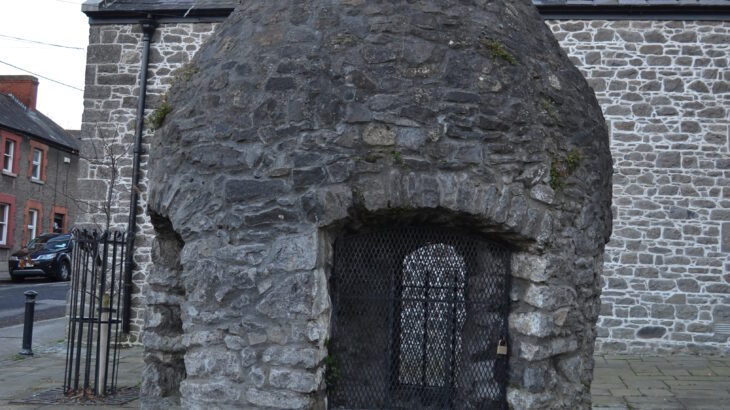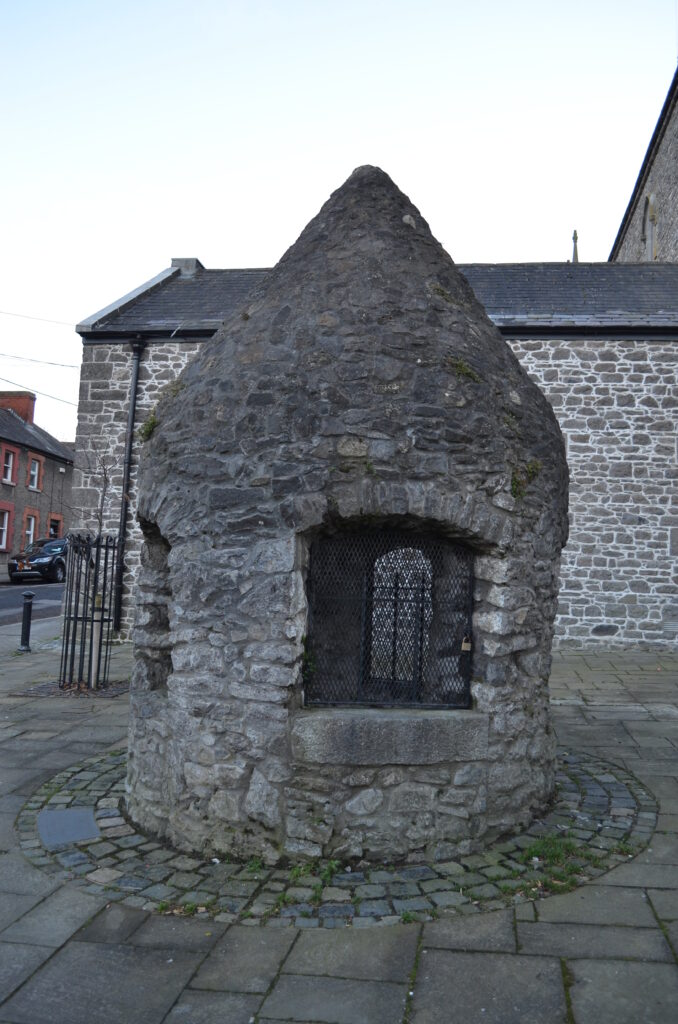
St. Sylvester’s Well
Old Street (Chapel Street), Malahide, Ireland
http://www.malahideheritage.com/#!sylvesters-well/cidb
http://malahideparish.ie/blog/the-history-of-st-sylvesters/
In the heart of Malahide sprung forth a natural spring that provided water for residents in this area since prehistoric times. By the historic era, it was well protected and revered as a holy well in addition to being the source of sustenance for the fisherman village. This well is found along the old Main Street in Malahide, which was later called Chapel Street, then Old Street.
The well site consists of a beautifully fortified stone well house containing the legendary St. Sylvester’s Well. Where Old Street meets Strand Street was originally designated the town Centre and stood primarily as a town inhabited by fishermen. By 1830 all of the buildings along this street were probably mud brick with thatched roofs seeing changes by 1901, and by the 1950s no thatched cottages remained.
These cottages were serviced originally by this natural spring located now on the corner of Old Street and Railway Avenue (formerly Fountain Lane). The first reference to the well on paper was a map by John Rocque of the area in 1756, indicating a well, but no name or title for it.
The well at this time had an opening at the top enabling residents to pull out water via the traditional method of rope and bucket to retrieve it. It was the village’s source of water until 1929 when water mains brought running water to Malahide. The well has since 1929 been covered under the guise that it was considered a danger to children. The well was later named after the adjoining Church of St. Sylvester. The actual name of the well and its dedication have been disputed for years.
Some historians claim the well got its title from the Pagan Sun-God Silvanus while others claimed it to be named after the Pope St. Sylvester (c. 270 – 335 C.E.) who was Bishop of Rome in 313 C.E. St. Sylvester was visited by Constantine the Great (c. 280-337 C.E.) suffering from leprosy and having a dream in which St. Peter and St. Paul advised him to visit St. Sylvester who restored him to full health.
Prior to this act, Constantine was an extreme adherent to Judaism. St. Sylvester questioned his faith and suggested that he should be disputed by a collective audience of Jews and Christians for the topics of discussion including Paganism, God, Christ, and the 10 Commandments. Zamberi, a leading Rabbi who volunteered to perform the miracle of healing as proof of his faith, approached an ox to whom he whispered the name “Jehovah” into the animal’s ear upon which the beast dropped dead. St. Sylvester retaliated by whispering the name “Christ” into the animal’s ear and the ox came back to life. St. Sylvester also apparently slew a dragon (probably a crocodile) using the name of Christ to convince Constantine. Impressed by this act, Constantine issued the Edict of Milen proclaiming total freedom of religion for all and was open to St. Sylvester’s healing of him.
In Tivoli, at the Church of San Silvestro, is a 13th-century wall painting depicting Constantine’s conversion to Christianity. The feast of St. Sylvester takes place every December 31st, leading pilgrims to this well in his honor. During the occupation of the area by the Normans, some scholars believe that it was the Normans who dedicated the well to St. Sylvester since they were very proud of their French origins, and the first French Pope Sylvester 11 would have been in the lead when they arrived here at the end of the 12th century. Yet other scholars believe the well was named after Bishop Silvester, a 5th-century holy man who was sent to deliver the Irish Pagans to Christianity.
The well has also been called “Sunday Well” by locals because the water was believed to have first manifested on a Sunday or potentially after one of Malahide’s first residents “Fir Domhnainn whose name was similar to the Irish name “Dia Domhnaigh” meaning “Sunday”. The well has also been called “Our Lady’s Well”. During this association, the well was seen to be associated with the Blessed Virgin Mary with pilgrimages occurring every August 15th doing patterns around the well. Reportedly the well was decorated at this time, and the statue of the Blessed Virgin was adorned by ribbons.
It is believed that this statue of the Lady, no longer extant, was “Our Lady of Malahide” and associated with the Oak panel carving of the Assumption in Malahide Castle. The patterns involved circling seven times while reciting the ran or special prayer. There was an absence of this August 15th practice for some time only until recently being revived. Baptisms took place at this well also through the ages involving a triple immersion. Today’s baptismal frequently has 8 sides because 8 is seen as the number of re-birth and is why many holy wells are octagonal shaped.
Wells along the coast have also been associated with eels and sacred fish, such as the eel in Malahide. In 1890 an eel was inserted into the waters of this well to purify it. Eels were believed to not be able to die before sunset, eel skins would make lucky belts for their wearer, horse hairs could turn into eels with the right magic, and the belief that Eel juice or soup would cure stomach cancer. Because of this, eels were often released into a holy well to swim in its waters and would therefore keep the water pure as the eel would eat all the mites, crustaceans, flies, nympha, and aquatic insects that would sour a well.
The well since pre-Christian times was reputed for curing various illnesses and diseases since its water’s had medicinal properties. Wells are also reputedly attracted to spirits often sites of hauntings. Sometimes these haunts are propitious if remembered, though vindictive if neglected. So holy wells like St. Sylvester’s are to be approached from the northern side, moving east to west, in imitation of the diurnal motion of the sun to prevent harm from spirits. Once this well was taken over by Christianity, the Pagan customs were adopted and adapted into the established Christian beliefs around wells.
St. Sylvester’s Church adjacent to the well was constructed in 1846 as a national school for boys and girls, converting to a boy’s school by 1954. It was then taken over by parishioners as a house of worship. This however was not the first Catholic Church in Malahide, nor the first church in the area dedicated to St. Sylvester. It was believed to have been erected during the darkest years of the Great Famine, but the latest in a series of churches raised by Malahide residents to the Glory of God.
Many believe however that the well was first named after St. Sylvester and these churches took their names from this well. During Protestant occupation and conversions, and when the celebration of mass was forbidden, the Abbey in the area ceased to be a place of worship and fell into ruin since there were no Protestants in Malahide at this time. The leading family, the Talbots, however, defied the law and turned their home into a mass house as many Catholics at this time believed the ban of mass was only temporary and would eventually be lifted.
The castle was utilized as a clandestine mass house until 1731 when Catholics came to the realization the government was powerless in the enforcement of the ban. A simple thatched chapel was built south of the well on a site donated by Richard Talbot, it was consecrated to St. Sylvester, and eventually built up by 1841 into a short, broad nave with four extensions – one of which was used as a sacristy and schoolroom, another as a porch opening to Old street. Through the years the church and building were built up erasing this pattern, of which only a footprint exists beneath the spire – the front carriageway and eastern-side passage. The church’s current foundation stone was designated in May 1845 by Archbishop Murray during the Great Famine.
